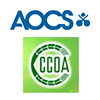The Food and Drug Administration (FDA) is publishing a final rule prohibiting certain nutrient content claims for foods that contain the omega-3 fatty acids docosahexaenoic acid (DHA), eicosapentaenoic acid (EPA) and alpha-linolenic acid (ALA). This rule finalizes a proposed rule the agency published in 2007 without any substantive changes.
The final rule prohibits statements on the labels of food products, including dietary supplements, that claim the products are "high in" DHA or EPA, and synonyms such as “rich in” and “excellent source of.” The final rule similarly prohibits some such claims for ALA. The final rule takes no action with respect to other such claims for ALA.
Under the Federal Food, Drug & Cosmetic Act (the Act), nutrient content claims such as “high in” are allowed only for nutrients for which a reference level to which the claim refers has been set. FDA can set such nutrient levels by regulation, or in some situations, if the requirements of the Act have been met, such nutrient levels can be based on authoritative statements published by certain types of scientific bodies, such as the Institute of Medicine of the National Academies (IOM).
FDA has not established nutrient levels that can serve as the basis for nutrient content claims for DHA, EPA, or ALA. In 2004 and 2005, FDA received notifications asserting that the IOM had issued authoritative statements that identified such nutrient levels for DHA, EPA, and ALA. There were multiple notifications that identified multiple, sometimes conflicting nutrient levels for these three omega-3 fatty acids. With respect to all of the nutrient content claims for DHA and EPA that were identified in the notifications, FDA has determined that none of these claims meets the requirements of the Act. The final rule therefore prohibits all of these claims. With respect to the two sets of nutrient content claims for ALA that were identified in the notifications (which differed in that each set identified a different nutrient level), FDA determined that one of these sets of claims did not meet the requirements of the Act. The final rule therefore prohibits that set of claims. FDA is taking no regulatory action at this time with respect to the other set of nutrient content claims for ALA, which will therefore be allowed to remain on the market.
The final rule is on display today at the Federal Register website and will officially publish April 28.
For more information:
The final rule prohibits statements on the labels of food products, including dietary supplements, that claim the products are "high in" DHA or EPA, and synonyms such as “rich in” and “excellent source of.” The final rule similarly prohibits some such claims for ALA. The final rule takes no action with respect to other such claims for ALA.
Under the Federal Food, Drug & Cosmetic Act (the Act), nutrient content claims such as “high in” are allowed only for nutrients for which a reference level to which the claim refers has been set. FDA can set such nutrient levels by regulation, or in some situations, if the requirements of the Act have been met, such nutrient levels can be based on authoritative statements published by certain types of scientific bodies, such as the Institute of Medicine of the National Academies (IOM).
FDA has not established nutrient levels that can serve as the basis for nutrient content claims for DHA, EPA, or ALA. In 2004 and 2005, FDA received notifications asserting that the IOM had issued authoritative statements that identified such nutrient levels for DHA, EPA, and ALA. There were multiple notifications that identified multiple, sometimes conflicting nutrient levels for these three omega-3 fatty acids. With respect to all of the nutrient content claims for DHA and EPA that were identified in the notifications, FDA has determined that none of these claims meets the requirements of the Act. The final rule therefore prohibits all of these claims. With respect to the two sets of nutrient content claims for ALA that were identified in the notifications (which differed in that each set identified a different nutrient level), FDA determined that one of these sets of claims did not meet the requirements of the Act. The final rule therefore prohibits that set of claims. FDA is taking no regulatory action at this time with respect to the other set of nutrient content claims for ALA, which will therefore be allowed to remain on the market.
The final rule is on display today at the Federal Register website and will officially publish April 28.
For more information:







